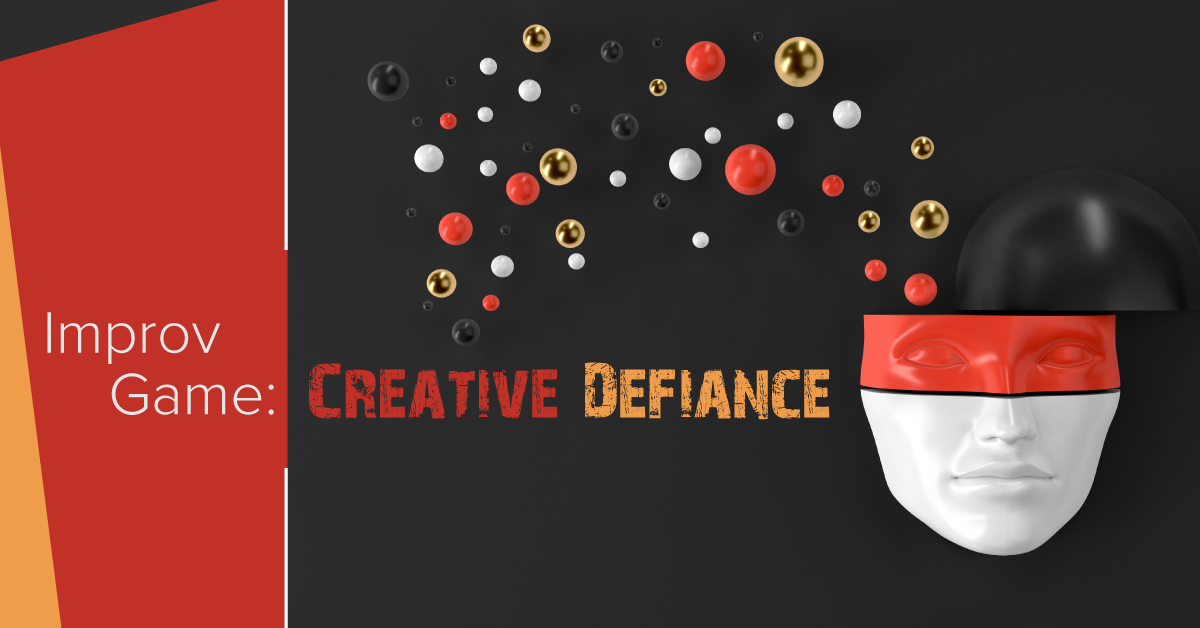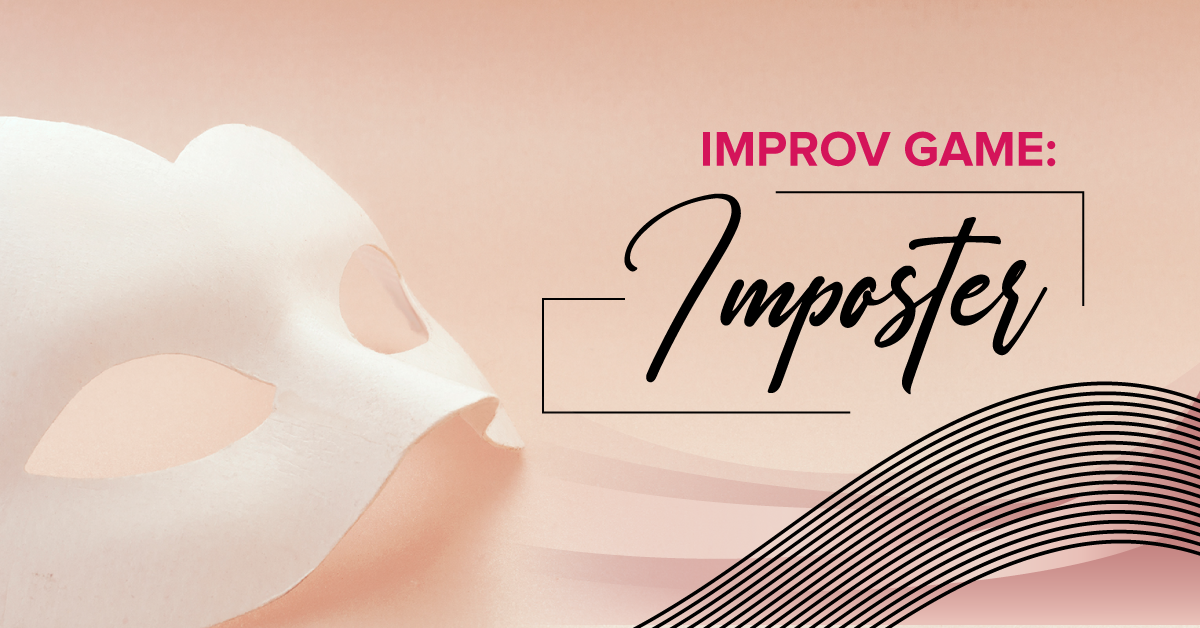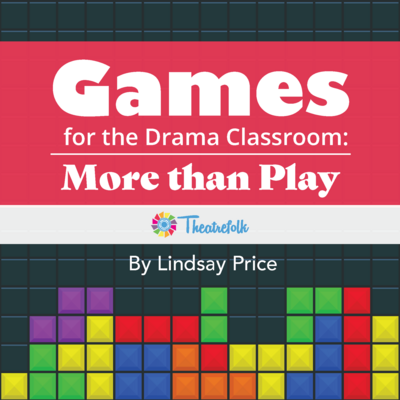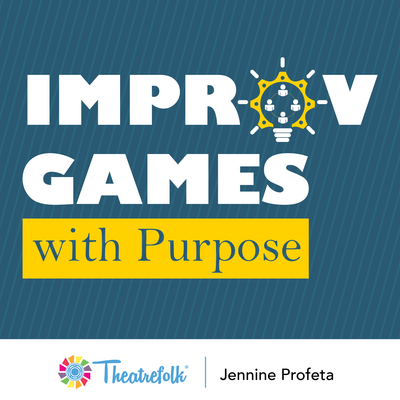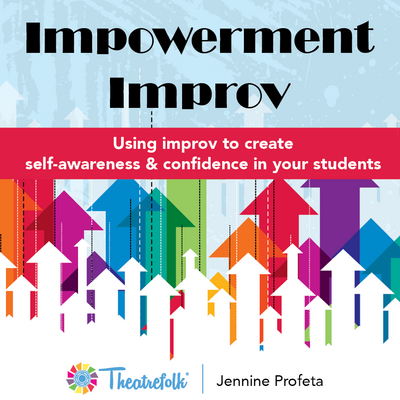Improv Game: Creative Defiance
The core tenet of improvisation is “Yes, and…” To keep the scene going, each participant must agree with any suggestion that is brought forward, and add something on. It’s a balance of giving and taking, and listening to each other. Teamwork is key. Participants look good by making their fellow group members look good.
In this game, the cardinal rule of improv is turned on its head. In groups, two students work together to keep a scene going, while a third student breaks the “Yes, and…” rule by disagreeing and taking the scene in another direction, leaving the rest of the team to follow along.
The purpose of “creative defiance” is for students to practice thinking quickly on their feet and problem solving, while staying cool under pressure. It’s a challenge no matter what side of the scene you’re on. This exercise can be done live in person, or online using a video conferencing program such as Zoom or Google Classroom.
Directions:
1. Divide students into groups of three. Select one student to be “No” and the other two students to be “Yes.”
2. Give each group a scene starter, such as a situation (baking a cake, climbing a mountain, taking a test), a location (the doctor’s office, on holidays in Spain, an underground lair), or a starting line. This could be as simple as “Good morning class!” or “Can you believe what they said?” or as complicated as you wish.
3. The two “Yes” students will start and perform the scene following the rule of “Yes, and…” by agreeing with what is currently happening in the scene and adding something to push the scene forward and give their group members something to work with.
For example: If the opening line is “Can you believe what they said?” a less than helpful response would be something like “What did they say?” or “I can’t believe it!” because while they are continuing the scene, they’re not offering any material for their partner to play off of. A better response would be something like “I know! Caitlin told Jeremy that his shoes were hideous. Frankly, I think she’s right.” Students are challenged to think quickly and make a decision.
4. The third student (“No”) will follow the rule of “No, and…” They will disagree or change what their group members have suggested, but they can’t just disagree – they must also come up with something different for the scenario.
From the previous example, one of the “Yes” students said “I know! Caitlin told Jeremy that his shoes were hideous. Frankly, I think she’s right.” The “No” student might say, “That isn’t right, Caitlin told Sherry that she’s terrible at math” or “You heard wrong, it was Jeremy that said Caitlin’s whole outfit was hideous, and Caitlin cried all night about it.” The “No” student disagrees with what is said, and gives some different piece of information to their group.
5. The “Yes” students need to go with whatever the “No” student says and figure out how to continue the scene while following the changes that have been presented. This can be frustrating or stressful – it is up to the “Yes” students to stay calm and cool and do their best to keep the scene going.
The challenge for the “No” student is to keep coming up with different, interesting ways of changing up the scene without resorting to obnoxious behaviour, giving repetitive or one-word responses, or shutting down. The goal of the “No” student isn’t to kill the scene (although that might happen), but to push it in a different direction and keep the rest of the group on their toes.
6. Keep the scenes brief. Be sure to cut groups off before students get too frustrated or run out of ideas. It’s likely that the scene may die organically – it’s challenging for students to have to constantly switch directions. But you may have to give them an out.
7. Discuss with the group members:
- Did the scene work? Why or why not?
- What did you try to do to keep the scene going?
- How did you feel when one of the team members was constantly disagreeing with you?
- How would you feel if someone acted this way in the real world?
- What would you do/how would you respond to this person?
Questions for the rest of the class:
- Did the scene work? Why or why not?
- How did you feel watching the scene?
- Was the scene funny, interesting, or entertaining? Why or why not?
- Why is the “Yes, and…” rule important when doing improv?
- How can this exercise be applied to the real world?
8. If you have time, start the scene again with all students following the “Yes, and…” rule. Have students compare it with the previous scene.
9. As an alternative challenge, select 1-3 students to act as referees. They will watch the scene carefully, listening for rule-breaking (such as the “No” student disagreeing but not offering a new piece of information, or the “Yes” student not going with new information presented) and giving strikes for rule-breaking. If a group member gets three strikes, they are out, and another student will jump in and take their place.
You may wish to end the class with a brief relaxation exercise or do something silly, like a dance party, to ease any tension or frustration that may have arisen from doing this exercise.
Related Articles
Games for the Drama Classroom: More Than Play
by Lindsay Price
A collection of games and activities that go well beyond the notion of "play."
Improv Games with Purpose
by Jennine Profeta
Improv games including feedback suggestions and questions, game variations, teaching tips, side coaching tips, entry prompts, exit slip questions, and more!
Your High School Improv Show Playbook
by Jim Hoare
Have you wondered how to take improv to the next level with your students? Your High School Improv Show Playbook is the "how-to" guide for you! Empower students to present their first improv show that is fun and entertaining for all.
Impowerment Improv
by Jennine Profeta
Using improv to create self-awareness & confidence in your students
